The state of Rajasthan, is a land where both citizens and artists alike take profound pride in their cultural songs, food, dance and other artistic expressions. Many monarchs and dynasties were blessed to witness a vibrant convergence of cultural heritage and artistic traditions and they consistently provided patronage to the talented artists and artisans during their reign. What we see today is how the present generation understands this legacy. Nevertheless, it is just a drop in the ocean of Rajasthani cultural traditions.
1. Phad
Phad is a 700-year-old tradition originating in Shahpura, Rajasthan. It depicts stories of local and folk deities such as Devnarayan and Pabuji, as well as episodes from mainstream Hindu mythology, such as the Mahabharata and Ramayana. The word Phad translates to ‘that which folds’, suggesting how the paintings are stored before and after their performance. The Bhopas and Bhopis belonging to the Rabari tribes have a long history of carrying these portable shrines, that is, Phad paintings from one region to another, thereby dispersing their message to different villages. They would sing and perform stories of their local deities like Devnarayanji (a reincarnation of Vishnu) and Pabuji (the local deity) using a two-string musical instrument, Ravanhatta while performing. Even though the details and the sequential order of arrangement of the episodes are a laborious task, the end product is eye-catching. Phad has been exclusively practised by the members of the Joshi family, who belong to the Chipa caste.
Did you know that during any auspicious occasion, the painting begins with the first stroke by a Kumari, or the young girl of the household?
2. Miniature School of Rajasthan
The tradition of Indian miniature traces back to the Pala period around the 7th century C.E. Originally, palm leaves were used as a medium to depict artworks and inscriptions. Around 960 C.E., the Chalukya dynasty introduced a similar painting style in the western regions of India. Over time, the tradition of miniature paintings in India diversified and developed under the patronage of various Rajput rulers and the Mughals. Subsequently, different schools of painting emerged. Some of the Rajasthani schools of painting are Bundi, Bikaner, Jaipur, Mewar, Marwar, Kota, and Kishangarh. Each of these regions nurtured magnificent miniature artistry with regional nuances while maintaining consistent themes across different schools. Themes such as Ragmala (musical melodies), Nayak-Nayika (hero and heroine), Rasikpriya (Beloved of the connoisseur), Godhuli Bela (twilight scenes depicting Krishna with his cows) and other themes surrounding Krishna-Radha, Shiv-Parvati and Ramyana were chosen by these miniature artists to fuel their artistic imagination. If we see the Bindu School of miniature paintings, the striking features of this school encompass a small round face, lush landscape, and lotus ponds. The Kishangarh paintings showcase the long slender bodies and necks, curly locks, and high and sloping foreheads of their characters. The natural colours that bestow these paintings with life are derived from precious and semi-precious stones and minerals. Miniature paintings are not ordinary paintings, they are the outcome of devotion rooted in the Vaishanava tradition and a heartfelt dedication to the pantheon of gods worshipped in India.
3. Pichwai
The Nathdwara district of Rajasthan, home to the followers of the Pushti Marg sect, a path dedicated to the worship of the seven-year-old form of Krishna, Shrinathji, is also home to the stunning Pichwai art. Lotus-laden pond, dainty cows, ornamented gopis and lush background, are some of the motifs that have been elevating the charm of Shrinathji in the Pichawai paintings. Sometimes, these elements are all seen together in one painting, while at other times, each character becomes the sole focus of the artist. The word Pichawai translates to “that which hangs from the back”. The Pichwai paintings are often hung behind the idol of Shrinathji or at homes for reverence and decoration. The details are so exquisite and the art is so precise that one wonders at the remarkable skill that goes into the creation of these paintings. The devotion of Shrinathji entails detachment from worldly pleasures and dedicating one’s life to the praise of Krishna, his shringar, his swaroops (divine forms) and his leelas (divine plays).
4. Kathputali or Rajasthani Puppets
Kathputlis or the wooden dolls of Rajasthan have a history of being bestowed with life by the hands and words of puppeteers. The magic unfolds, and they come alive, dancing, performing and even singing, captivating the hearts of the eager audiences, both young and old. For many historians, the animated art of kathputli dates back over a thousand years ago, emerging as a medium of praising and recounting the folklore of courageous kings and prosperous kingdoms. Scholars and historians have traced the origins of these puppets to the indigenous Bhat community of Rajasthan, who once followed a very nomadic lifestyle. The Bhat community flourished under the patronage of nobles and royals whom they eulogised through their crafts and shows. Over time, Rajasthani puppetry embraced various themes to flourish as a source of entertainment.
5. Usta Kala
A craft that is a testimony of skill, patience and elaborate patterns is the craft of Usta Kala. The gold-encrusted naqashi art of Usta from the Bikaner district of Rajasthan got its name from the Persian word, Ustad, which is a title given to a master of certain art and occupation. Indeed, the level of mastery required in this craft comes from extensive practice under the guidance of skilled artists. The 400-year-old Bhand Shah Jain temple, Rampuria Haveli of Bikaner, Ajmer Sharif Dargah, and Anup Mahal are some of the fine examples of the Usta Kala embedded in the architecture of India. The camine flower patterns created using deep green and red infuse vibrancy to the Usta Kaam.
6. Jadau Jewellery
The jadau jewellery which is now quite a popular choice of brides across India to add richness to their overall attire, was once heavily worn on a day-to-day basis by the royal women and queens of Rajasthan. The Jadau jewellery is so intricate and wonderful to look at, that its popularity goes without a question. Jadau is derived from the word Jad, which means to embed and this method of Jadau is commonly used in Kundan, Polki and Meenakari jewellery. For instance, in the making of Meenakari, Polki and Rajputani jewellery, a fine metallic base of gold and silver is used upon which emeralds, pearls, and diamonds are embedded. These unique styles of jewellery-making were brought by the Mughals. The speciality of Jadau jewellery also lies in the fact that no adhesives are used in the embedding process. For a long time jewellery in the form of hathful (hand bracelet), kanthi ( traditional choker), bajuband (upper armlet), bangadi ( a set of two heavy bangles) have served immensely in showcasing the wealth, power and pride of the emperors and the royal ladies.
7. Thewa Jewellery
Rajasthani jewellery is synonymous with the true essence of royalty, where skilled craftsmanship is involved to accentuate the meticulous attention to the details and set precious stones in gold. Thewa jewellery is yet another example where expert hands and exquisite elements come together, resulting in a stunning creation that evokes a sense of timeless beauty. The primary components that go into the making of this wearable art piece are 24K glistening gold and well-cut, multicoloured glasses. The motifs range from Indian flora and fauna to designs inspired by court scenes and mythology.
8. The tribal silver jewellery craft
Women and men alike have been adorning themselves in India for a long period, sometimes it is simply to beautify the body, and at other times it has a symbolic relevance. The tribal silver jewellery speaks of the nomadic tradition of Rajasthan, decorated with shells, beads, and metallic mesh. Stone jewellery has been worn by men and women like they are an innate part of their bodies. For instance, Madaliya is a type of necklace, Bhor is a head ornament, Hansuli is another type of a neckpiece, Kada is a name given to their anklets, while Bichuwa is toe rings, kardhani/ tagdi or the belly belt are adorned on the waist. They are worn with so much love, on almost all visible parts of the body. Wearing silver jewellery is very common and customary amongst the tribals.
9. Ivory Jewelry

Wearing ivory bangles is not only meant to beautify hands, it has been a longstanding symbol of a good and stable married life amongst the women of Rajasthan. Worn during auspicious events like weddings, festivals, and ceremonies, ivory bangles are thought to confer blessings, prosperity, and protection upon the wearers. They are the bearers of love and legacy as these bangles were patronised and passed down from one generation to the next. However, as the demand for ivory increased globally, elephant poaching and illegal trade caused a significant threat to wildlife, which eventually prompted the artisans to explore alternative materials and more sustainable alternative materials.
10. Blue Pottery
Another craft that has withstood the test of time while also maintaining its old appeal is the blue pottery of Rajasthan. The unique style of blue pottery has its roots in the Turko-Persian tradition, while the shape and size have been influenced by the Chinese tradition of pottery making. The name blue pottery comes from the seminal application of cobalt blue in this handicraft. Interestingly, there is no clay used in the making of blue potteries, and instead, multani mitti or fuller's earth, powdered glass, gum borax, and quartz stone are mixed with water to create a dough. This dough is further blended with rakh (ash) and bajri (stones). After undergoing the moulding, drying, designing and colouring process, what emerges is the epitome of artistry. Pottery from Bikaner is distinct from the ones made in Jaipur. The use of gilt and lac (a resinous material ) is quite evident in the Bikaner tradition of pottery making.
10. Dhurrie
Dhuri, Dhurrie or Dari is a special type of handwoven rug that is made manually by polished artisans. From bedding and packaging to cover the floors, dhuri’s versatility has made it indispensable amongst the local populace of Rajasthan. Cotton, jute, fleece and silk are dexterously employed in the weaving of these coverlets. Traditionally, a dhuri is created using a vertical weaving loom, known as khadav magga; the artisans integrated highly contrasting colours of red, green, and yellow adding dynamics and vibrancy to their handmade dhuri. The process of making a dhuri demands intensive labour and patience. The weavers dedicated to the making of dhurrie craft do not follow any set manual, rather these incredible utility items are weaved out of memory of the designs that are passed down to them from their fathers and forefathers.
11. Bandhej and Leheriya saree
Known for its dazzling colours and dotted designs, a typical Rajasthani or Gujarati bandhej is truly an amalgamation of catchy colours and printed patterns. The word Bandhej or Bandhani is derived from the Sanskrit word Banda which means “to tie”. Rajasthan, Gujarat and Uttar Pradesh are the main hubs that continue to practise this ancient art which began some 5000 years ago. Jaipur, Jodhpur, Sikar, Bhilwara, Udaipur, Bikaner, Ajmer and Jamnagar are the main epicentres of producing bandhani odhani, sarees, turbans, salwar-kameez, kurtas, and chaniya-choli. Artisans dexterously manipulate the cotton threads to bind the main fabric before dying, which allows for the creation of rich, motif-laden designs with the interplay of colours. Dundar Shahi (mountain pattern), Boond (small dot with dark centre), Kodi ( teardrop shapes), Laddu Jalebi (sweets) are some of the gorgeous motifs that enhance the appeal of bandhej among consumers from all walks of life.
12. Metal Crafts
The origin of the metal craft in Rajasthan is closely linked to the thatheras, a group of craftsmen who were invited to Jaipur from Amber in the 16th century. Their finesse lay in the creation of daily items using brass, copper, and tin. A splendid amalgamation of Rajasthani metal craft with Persian artistic style goes into crafting these metal pieces, adding both nobility and novelty to this art form. Ever wondered where the sharp swords, sheaths, shields, body armour, and helmets of the majestic fighters get their ornamentations from? It is the technique of koftgiri, which was crafted by the gifted metalsmith community of Gadi Lohars. Theva, Morari, Chikan, Bichi are some of the metal crafting techniques from the wide array of techniques that still inspire awe in those who catch a glimpse of them.
13. Mojaris
Artisans in Rajasthan are skilled at creating leatherwork items, and the long tradition of mojris (leather shoes) made by the local mochis is a prime example of their craftsmanship. Today, mojari have gained widespread recognition and are readily bought on special occasions across the nation. However, in rural Rajasthan, mojaris have always been worn daily by men and women of myriad communities. The correct combination of leather’s thermal properties along with the thick sole provides protection for the feet against the sand, pebbles, thorns and the scorching heat of the desert terrain. Jodhpur, Jhunjhunu, Ajmer, Bikaner and Jaipur stand apart for their mojris. One can see that most of the time these leather juttis have delicate and colour-rich embroidery on them. This shows that Rajasthani men’s footwear have always been as diverse and stylish as that of the women.
14. Molela plaques
The Molela village in the Rajsamand district of Rajasthan is well-acknowledged for moulding gods and chronicling the sagas with the use of humble clay. The Molela plaques or the unique, hollow terracotta works are an integral creation of this hamlet in Rajasthan, made by the Kumhars, a name given to the potter community. Similar to many crafts of India, there is a local legend behind the genesis of the Molela plaques. There was a blind potter whose sight was miraculously restored when he received a divine message from God Devnarayan in his dream. The God asked him to dig clay from the banks of river Banas and make his image, post which, his eye-sight was restored. Since then, the craft has become a cherished tradition for the locals and people belonging to different tribes. A considerable skill goes into making these terracotta figures which includes shaping the soft clay, intermittently drying panels, firing the designs in the kiln and painting them to give them their signature reddish brown colours.
15. Kavad
Apart from terracotta, another craft of Rajasthan manifests in three-dimensional form, is Kavad. In simpler terms, Kavad is a mobile storytelling device that sometimes functions as a temporary shrine for Gods, heroes, and saints. The village of Bassi, nestled in the Chittorgarh district of Rajasthan is a home for sutars or jangids, a special group of carpenter community, who make portable wooden boxes from mango and selam trees. The chitrakars (painters) then paint a visually intriguing line of recollections and accounts about local deities, patrons, and legends with the help of a dynamic and colourful palette. A wandering priest (kavadia bhatt) then carries these panels and travels, from village to village, carrying tales to the eager audience (jajmans). Today, this incredible art form of creation and narration is on the brink of extinction.
16. Mandana
The folk art of Mandana, Rajasthan brings to the forefront the creativity of the women belonging to the Meena community of Rajasthan. The word Mandana translates to “decorate” and the term is used both for the process of making art as well as the complete design. The origin of Mandana painting is said to date back to the Vedic age, approximately from 1500 BCE to 500 BCE. Apart from Rajasthan, another epicentre of Mandana or Meena painting is Madhya Pradesh. The central intention behind the creation of Mandana is to invite the divine and positive forces while warding off the inauspicious.
How wonderful it is that Mandana’s complex and distinctive patterns, where no colours are used, have etched an indelible mark in the history of art.
17. Kagzi pottery
It would be unjust not to mention the pottery style and pottery practices in Rajasthan when discussing the crafts of the Indian subcontinent. Furthermore, pottery stands as one of the most tangible evidence when examining the history of India and its earliest civilization. One of the techniques of pottery making is the Kagzi pottery, which comes from the Alwar district of Rajasthan. Due to its fragile appearance, it is referred to as kagzi pottery or “paper pottery”. Given its intricate designs and delicate nature, kagzi pottery is often bought as a home decor item. In recent times, kagzi pottery has gained acknowledgement as an integral component of Rajasthani culture.
18. Tarkashi
If there is any craft that embodies both durability and regal beauty, it is Tarakashi. This 500-year-old craft involves engraving strips of glistening metal, or “tar” on a durable wood to create ornate designsand geometric patterns inspired by Persian art. Soon after its inception, the art became very popular in designing doors, mirror frames, Quran boxes, lanterns, and ornamental shrines. The artistic tradition can be viewed as a memento left by those artisan communities who journeyed to Jaipur during the reign of Maharaja Jai Singh II. This meticulous technique of inlaying fine brass, copper or silver metals onto a wooden block is called Tarakashi. For the creation of these intricate designs, the artisan traces a layout from a piece of paper onto the wooden block, then carefully carves thin grooves along the outline.
19. Dabu - mud resist dying
The ancient mud-resist hand block printing technique of dabu can be traced to about 675 CE. The word Dabu comes from the Hindi word dabana, which means “to press”. This print is a design that is typically derived by pressing a hand-carved wood block to imprint patterns and motifs onto the fabric. The entire process of creating a dabu print is highly labour-intensive. It begins with thoroughly washing the plain fabric, which is followed by meticulous dyeing and the creation of structured patterns. An important step in this process involves applying a mud-resistant paste, formed of mud, gum, lime, wheat chaff and water. The final piece is a product rich with layers and patterns.
20. Bittichitra/ vittichitra (wall painting)
Apart from Chhattisgarh and Odisha, if there is any other state that is known for enhancing the aesthetic allure of the art of Bhittichitra, it is the state of Rajasthan. For the creation of traditional Bhittichitra paintings, natural colours such as geru (red), neel (blue), safed (white), jahri (black) are dipped in brushes to form sophisticated, religious-themed paintings on the walls. To make it permanent, these colours are cooked with tisi or flaxseed oil.
21. Meghwal embroidery
The Meghwals and Ahirs of Kutch have managed to prosper and sustain by keeping their creativity, language and skill sets alive. Megh, Meghwar are some of the other names of Meghwals. What is interesting is that the style, colour and patterning of their garment are intrinsically related to the marital status of women who are engaged in Meghwar embroidery. Like colours, mirrors are an essential component that goes into the making of Meghwal embroidery. Interestingly, Meghwal embroidery can be broadly classified into 2 types- Kacho and Pako or Pakko. Running stitch, backstitch, cross-shaped stitch, and herringbone are some of the needlework styles that go into kacho embroidery. Solid blockchain and dual buttonhole go into the creation of pakko embroidery.
22. Sandalwood Carving
Another tradition of craft that has been enhancing the majesty of Rajasthan is the sandalwood carving. As the name suggests, these are the carvings that are made onto the wood piece derived from sandalwood trees. A sandalwood tree in itself holds a very special place among the hearts of many Indians, owing to its rarity and sacredness. Due to its preciousness, the carvings crafted from it are inherently valuable. Sandalwood comes in two main types, sugandha- which is yellowish-brown and the other is nagagandha, which is darkish brown, typically used for extracting oil. The carving is expertly crafted by skilled hands, setting them apart as the object of true artistry .
Rajasthan remains a beloved spot for both locals and visitors from abroad. Despite being a desert region, it continues to overflow with vibrant traditions, mouthwatering cuisines, and stunning arts that truly keeps its legacy alive. It is a treasured trove waiting to be explored more and more.
- Rajasthan Studio. “Jewellery Art of Rajasthan: The Glamorous Restoration of Traditions -.” Rajasthan Studio, May 4, 2022. https://rajasthanstudio.com/jewellery-art-of-rajasthan-the-glamorous-restoration-of-traditions/.
- Chopra, Yashna. “Everything You Need to Know about Jadau Jewellery.” Vogue India, December 12, 2019. https://www.vogue.in/fashion/content/jadau-jewellery-everything-you-need-to-know-hazoorilal-legacy-earrings-necklace-wedding.
- Khanna, Sanskriti. “12 Most Popular Designs of Jewellery from Rajasthan.” ZeroKaata Studio, June 26, 2023. https://www.zerokaata.com/zerokaata-studio/traditional-jewellery-of-rajasthan/.
- Khajane, Jahnavi. “Katputhlis: A Symbol of Folk Heritage of Rajasthan.” Yeh Hai India, July 13, 2022. https://yehaindia.com/katputhlis-a-symbol-of-folk-heritage-of-rajasthan/.
- “A Glittering Legacy: Exploring the History of Ivory Bangles in Rajasthan.” TheDailyGuardian. Accessed April 3, 2024. https://thedailyguardian.com/a-glittering-legacy-exploring-the-history-of-ivory-bangles-in-rajasthan/.
- Jaswal, Misha. “A Journey through Time: The Evolution of USTA Craft.” Memeraki Retail and Tech Pvt Ltd., March 11, 2023. https://www.memeraki.com/blogs/news/a-journey-through-time-the-evolution-of-usta-craft.
- “GI Tag Is No Quick Fix for Bikaner Usta Kala’s Return to Glory.” IndiaTimes, October 5, 2023. https://www.indiatimes.com/explainers/news/gi-tag-is-no-quick-fix-for-bikaner-usta-kalas-return-to-glory-616862.html.
- “Dhurrie Weaving. Everything You Need to Do.” Hindi Krafts, September 21, 2020. https://hindikrafts.com/dhurrie-weaving/.
- Rajasthan Studio. “9 Popular Painting Styles of Rajasthan.” Rajasthan Studio, October 21, 2023. https://rajasthanstudio.com/9-popular-painting-styles-of-rajasthan/.
- “The History of the Traditional Indian Dhurrie.” ExclusiveLane. https://exclusivelane.com/blogs/handmade/the-history-of-the-traditional-indian-dhurrie.
- Bhatnagar, Pari. “Phad Paintings - Lively, Ancient Folk Art Form of Rajasthan Art & Culture.” Caleidoscope, September 30, 2021. https://www.caleidoscope.in/art-culture/phad-paintings.
- Srivastava, Dr. Shuchi. “Indian Miniature Paintings: An Incredible Cultural Heritage.” Open Access Journal of Archaeology and Anthropology, March 3, 2023. https://www.academia.edu/97870047/Indian_Miniature_Paintings_An_Incredible_Cultural_Heritage.
- “Miniature Painting & Art - History & Evolution, Schools & Techniques.” & Art - History & Evolution, Schools & Techniques. https://www.culturalindia.net/indian-art/paintings/miniature.html.
- “The Pichwai Tradition: Tapestries of Krishna - Google Arts & Culture.” Google. Accessed March 29, 2024. https://artsandculture.google.com/story/the-pichwai-tradition-tapestries-of-krishna-museum-of-art-photography/6gVBMaDSAPGtIw?hl=en.
- Krishnan, Anjali. “Explore India’s Rich Pottery Tradition with 8 Stunning Forms You Should Know About.” The Better India, June 8, 2022. https://www.thebetterindia.com/287886/jaipur-blue-pottery-karnataka-metal-handicraft-india-traditions/.
- “Bandhani or Bandhej Embroidery: This Tie & Dye Work from Rajasthan Is a Rage.” Utsavpedia, March 6, 2017. https://www.utsavpedia.com/motifs-embroideries/bandhej-bandhani/.
- “Rajasthani Metal Craft.” IndiaNetzone.com. Accessed March 31, 2024. https://www.indianetzone.com/22/rajasthani_metal_craft.htm.
- “Thathera Metal Craft - Google Arts & Culture.” Google. Accessed March 30, 2024. https://artsandculture.google.com/story/thathera-metal-craft-jaipur-virasat-foundation/wwUBbo5vZSfiIg?hl=en.
- “Koftgiri~Udaipur - Craft Archive: Research on Indian Handicrafts & Handloom.” Craft Archive | Research on Indian Handicrafts & Handloom - Indian Craft online, March 29, 2022. https://gaatha.org/Craft-of-India/study-koftgiri-craft-udaipur/.
- “A Stitch in Time: The Jodhpur Mojari.” Sahapedia. Accessed March 30, 2024. https://www.sahapedia.org/stitch-time-jodhpur-mojari.
- Yagnaraman, Aanya. “Molela Village: A Hidden Gem of Traditional Crafts.” Memeraki Retail and Tech Pvt Ltd., June 10, 2023. https://www.memeraki.com/blogs/news/molela-village-a-hidden-gem-of-traditional-crafts.
- Jaswal, Misha. “Molela Terracotta: A Rajasthani Craft.” Memeraki Retail and Tech Pvt Ltd., September 28, 2021. https://www.memeraki.com/blogs/news/molela-terracotta-craft.
- Daryani, Khushi. “Mandana Paintings - Binding Together Generations of Women in Rajasthan.” Memeraki Retail and Tech Pvt Ltd., December 11, 2020. https://www.memeraki.com/blogs/news/mandana-paintings-binding-together-generations-of-women-in-rajasthan.
- “What Is Kavad Art? Exploring the Ancient Art of Storytelling -.” Rajasthan Studio, May 4, 2022. https://rajasthanstudio.com/what-is-kavad-art-exploring-the-ancient-art-of-storytelling/.
- “Mandana Painting - the Tribal Art That Has Taken over the World.” Rajasthan Studio, May 6, 2022. https://rajasthanstudio.com/mandana-painting-the-tribal-art-that-has-taken-over-the-world/.
- “Kagzi Pottery of Alwar: Ancient Art of Paper-Thin Pottery.” Swadesi, August 29, 2023. https://swadesi.org/kagzi-pottery-of-alwar-rajasthan/.
- “Are You Aware about the Tarkashi Craft Which Can Adorn Any Surface?” Rajasthan Studio, December 26, 2022. https://rajasthanstudio.com/are-you-aware-about-the-tarkashi-craft-which-can-adorn-any-surface/.
- “Tarkashi : Wood Inlay of Rajasthan.” Asia InCH – Encyclopedia of Intangible Cultural Heritage. Accessed March 30, 2024. https://asiainch.org/craft/wood-inlaytarkashi-of-rajasthan/.
- “Dabu Printing Tradition of Rajasthan.” India Heritage Walks. Accessed March 30, 2024. https://www.indiaheritagewalks.org/blog/dabu-printing-tradition-rajasthan.
- “Bhitti Chitra – Wall Painting of Rajasthan.” Asia InCH – Encyclopedia of Intangible Cultural Heritage. Accessed March 30, 2024. https://asiainch.org/craft/bhitti-chitra-wall-painting-of-rajasthan/.
- “Meghwal Embroidery. Everything You Need to Know.” Hindi Krafts, October 29, 2020. https://hindikrafts.com/meghwal-embroidery-everything-you-need-to-know/.
- “Meghwals and Ahirs of Kutch - Google Arts & Culture.” Google. Accessed March 30, 2024. https://artsandculture.google.com/story/meghwals-and-ahirs-of-kutch-dastkari-haat-samiti/_wVxCRkTbDtcJw?hl=en.


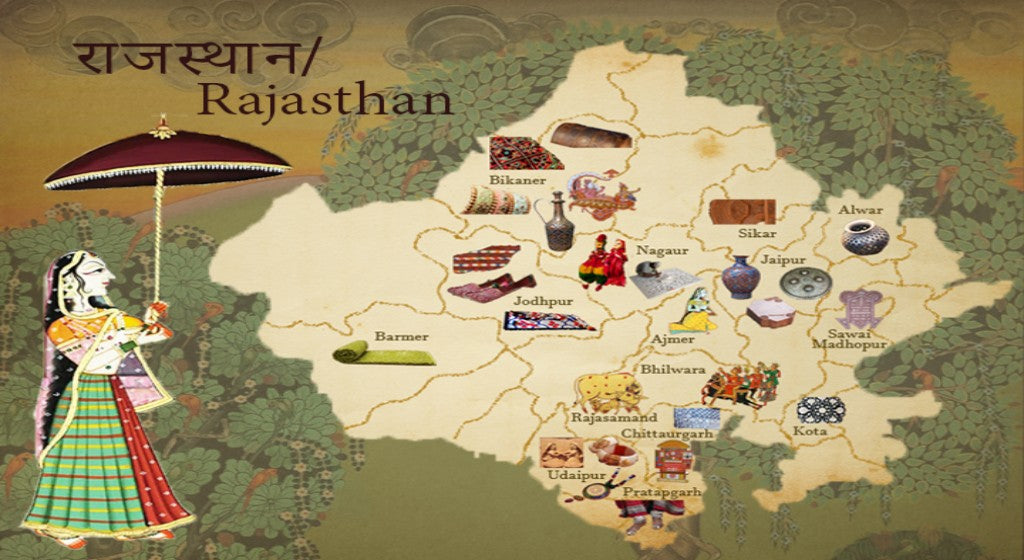
































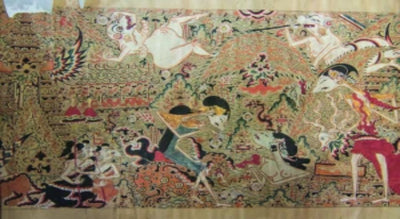
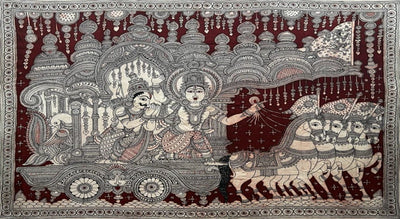

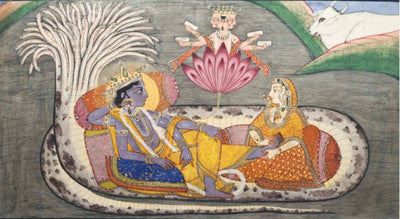
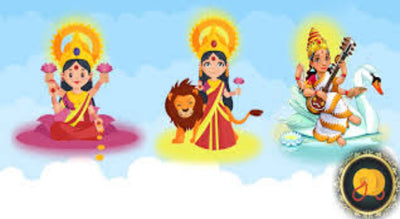
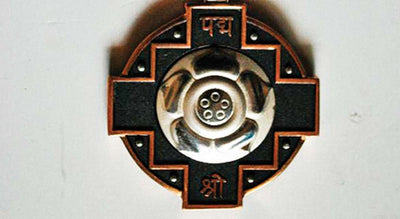
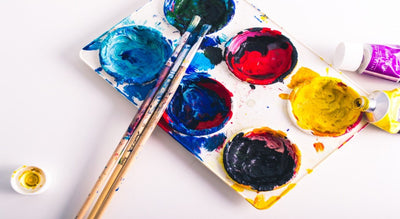
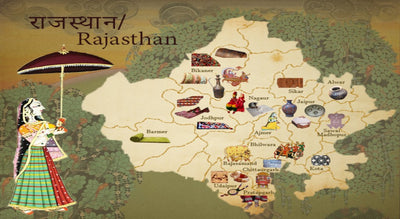
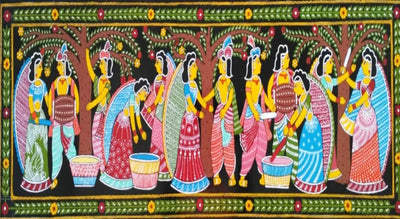
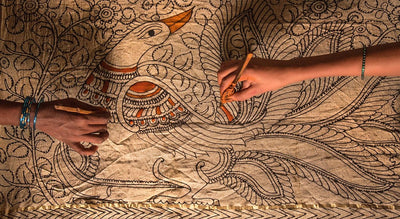
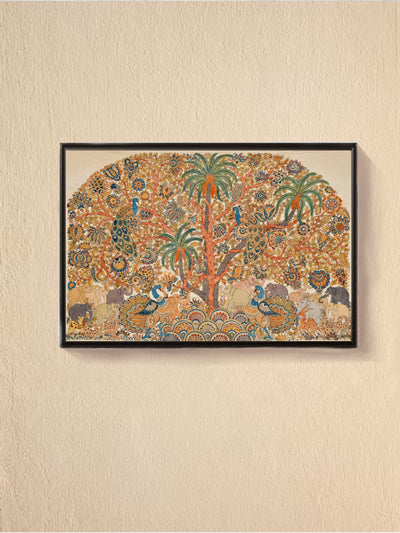







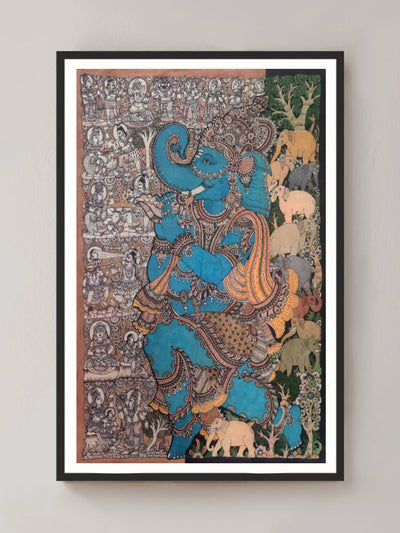








0 comments